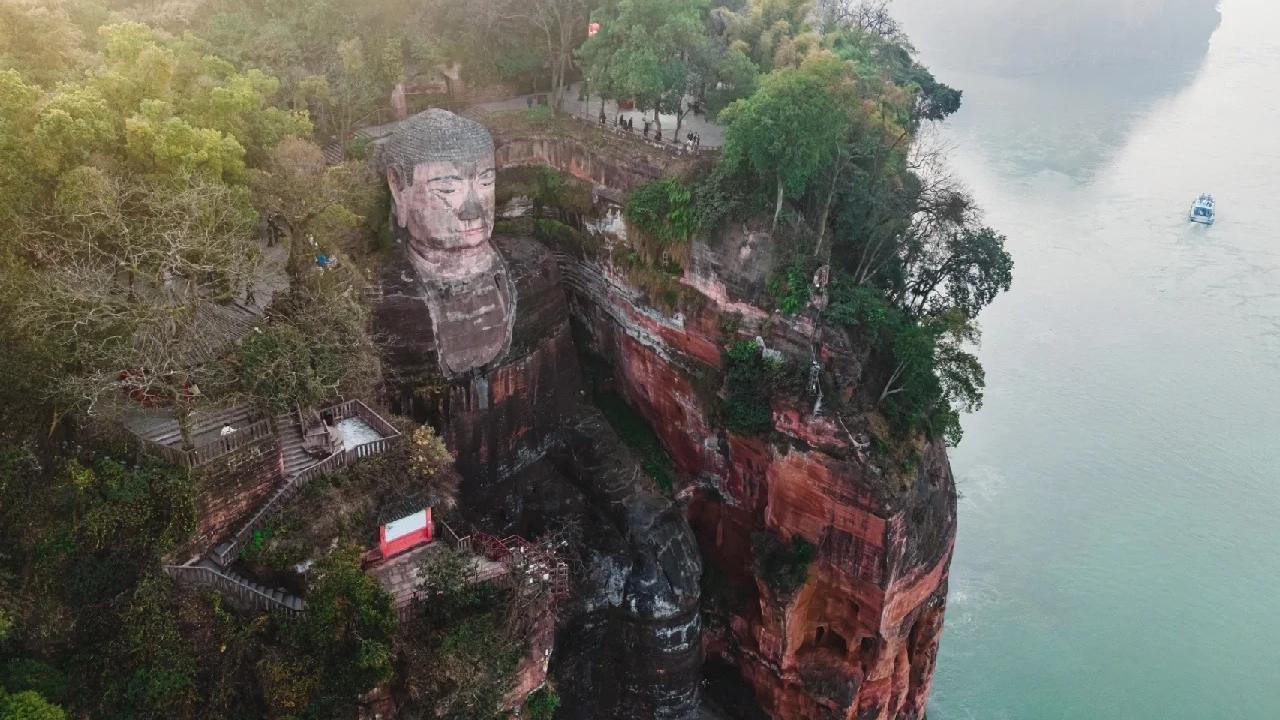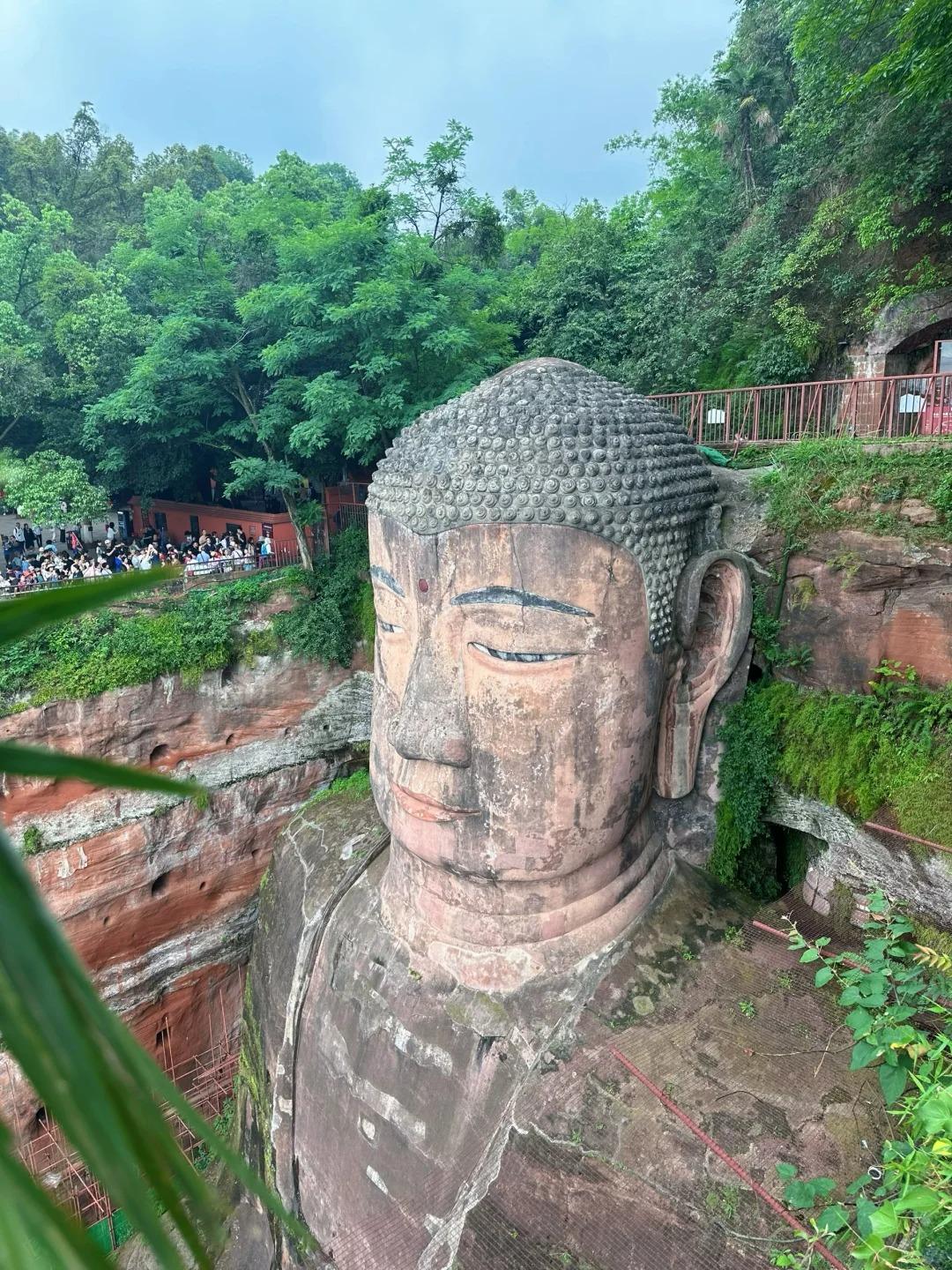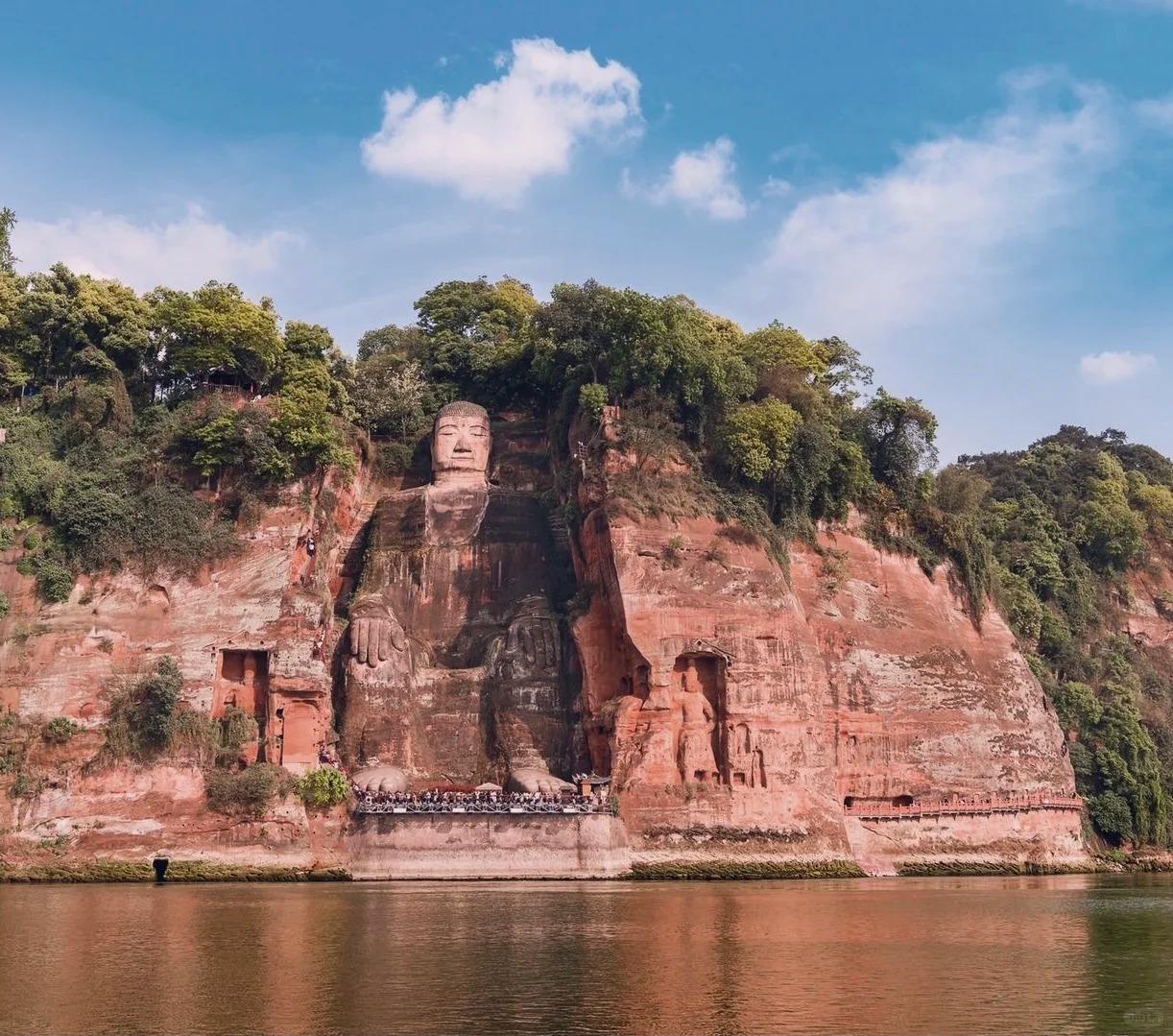Introduction to the Leshan Giant Buddha
Nestled in the picturesque city of Leshan, Sichuan Province, the Giant Buddha stands as an awe-inspiring testament to human devotion and artistic prowess. Carved into the red sandstone cliff face at the confluence of the Min, Qingyi, and Dadu rivers, this colossal statue holds the distinction of being the largest stone Buddha in the world.
Towering at an impressive 71 meters (233 feet) in height, the Leshan Giant Buddha has captivated visitors for over a millennium. Its historical and cultural significance was recognized globally in 1996 when UNESCO designated it as a World Heritage Site, cementing its status as one of China’s most treasured landmarks.

Historical Background and Construction
The creation of the Leshan Giant Buddha was a monumental undertaking that spanned nearly a century, from 713 to 803 AD during the Tang Dynasty. This ambitious project was initiated by a Buddhist monk named Hai Tong, who envisioned a divine protector to calm the turbulent waters that had long plagued local boatmen.
| Construction Details | |
|---|---|
| Time Period | 713-803 AD |
| Dynasty | Tang Dynasty |
| Initiator | Monk Hai Tong |
| Primary Purpose | River Safety |
Hai Tong’s vision extended beyond religious symbolism; the statue was ingeniously designed to alter river currents and improve navigation. The massive amount of stone removed from the cliff and deposited in the river helped to calm the waters, making them safer for vessels.
The construction process was a marvel of ancient engineering. Craftsmen used a sophisticated scaffolding system to carve from top to bottom, employing simple tools like chisels and hammers. The project faced numerous challenges, including funding issues and political upheavals, but perseverance ultimately triumphed.

Physical Characteristics and Design
The Leshan Giant Buddha is a masterpiece of proportion and detail:
- Height: 71 meters (233 feet)
- Shoulder Width: 28 meters (92 feet)
- Head Height: 14.7 meters (48 feet)
The statue depicts Maitreya, the future Buddha, in a seated position with hands resting on his knees. His serene expression, with slightly curved lips and half-closed eyes, conveys a sense of tranquility and wisdom that has endured for centuries.
One of the most ingenious features of the statue is its internal drainage system. Hidden gutters and channels within the structure help to prevent erosion and water damage, contributing to its remarkable state of preservation. This ancient “hidden technology” continues to protect the Buddha from the elements to this day.

Cultural and Religious Significance
The Leshan Giant Buddha holds immense importance in Chinese Buddhism, symbolizing the faith’s deep roots in the region. It has become an integral part of Leshan’s identity, driving tourism and shaping the local economy.
Local legends abound, adding to the statue’s mystique. One popular tale suggests that the Buddha’s presence has indeed calmed the rivers, attributing a decrease in shipwrecks to its divine influence. Another story claims that the statue’s construction was funded by Hai Tong gouging out his own eyes to demonstrate his devotion.
Annual ceremonies, such as the Buddha’s birthday celebration, draw thousands of pilgrims and tourists alike, showcasing the enduring spiritual significance of this ancient monument.

Conservation Efforts and Challenges
Preserving this ancient wonder poses significant challenges. Recent conservation efforts have focused on:
- Cleaning and repairing weathered areas
- Strengthening the internal structure
- Monitoring and mitigating environmental threats
Pollution, acid rain, and the sheer number of visitors pose ongoing threats to the statue’s integrity. Modern technology, including 3D scanning and AI-powered monitoring systems, is being employed to aid in preservation efforts.
Balancing the need for conservation with the demands of tourism remains a delicate task for local authorities. Visitor numbers are carefully managed to minimize impact while still allowing access to this remarkable site.
Visitor Experience and Viewing Options
Visitors can appreciate the Giant Buddha from multiple perspectives:
- River View: Boat tours offer a spectacular frontal view of the statue.
- Cliff-side Paths: Walking trails provide close-up views of intricate details.
- Viewing Platforms: Offer panoramic vistas of the statue and surrounding landscape.
The best times for viewing are typically in the morning or late afternoon when the lighting enhances the statue’s features. Spring and autumn offer pleasant weather conditions for exploring the site.
Photography tip: A wide-angle lens is essential to capture the full scale of the Buddha, especially from the river perspective.

Practical Information for Travelers
To reach Leshan:
- High-speed trains run from Chengdu (1 hour)
- Buses are available from major cities in Sichuan
Entrance Fee: Approximately 80 CNY (subject to change)
Opening Hours: 7:30 AM to 6:30 PM (peak season)
Plan to spend at least half a day exploring the Giant Buddha and surrounding area. Nearby attractions include:
- Wuyou Temple
- Leshan Museum
- Oriental Buddha Park
Tips for visitors:
- Wear comfortable shoes for climbing stairs
- Visit early to avoid crowds, especially during peak seasons
- Bring water and snacks, as options within the scenic area may be limited
The Leshan Giant Buddha is more than just a statue; it’s a bridge between past and present, a testament to human faith and engineering prowess. As you stand before this colossal figure, feeling dwarfed by its immense presence, you’ll gain a profound appreciation for the vision and dedication of those who created it. Whether viewed from a bobbing boat on the river or up close on the winding stairs, the Giant Buddha leaves an indelible impression, inviting contemplation of both its ancient origins and enduring significance in modern China.






